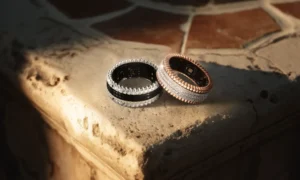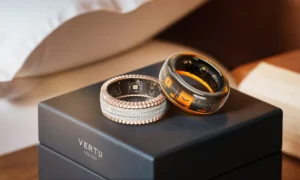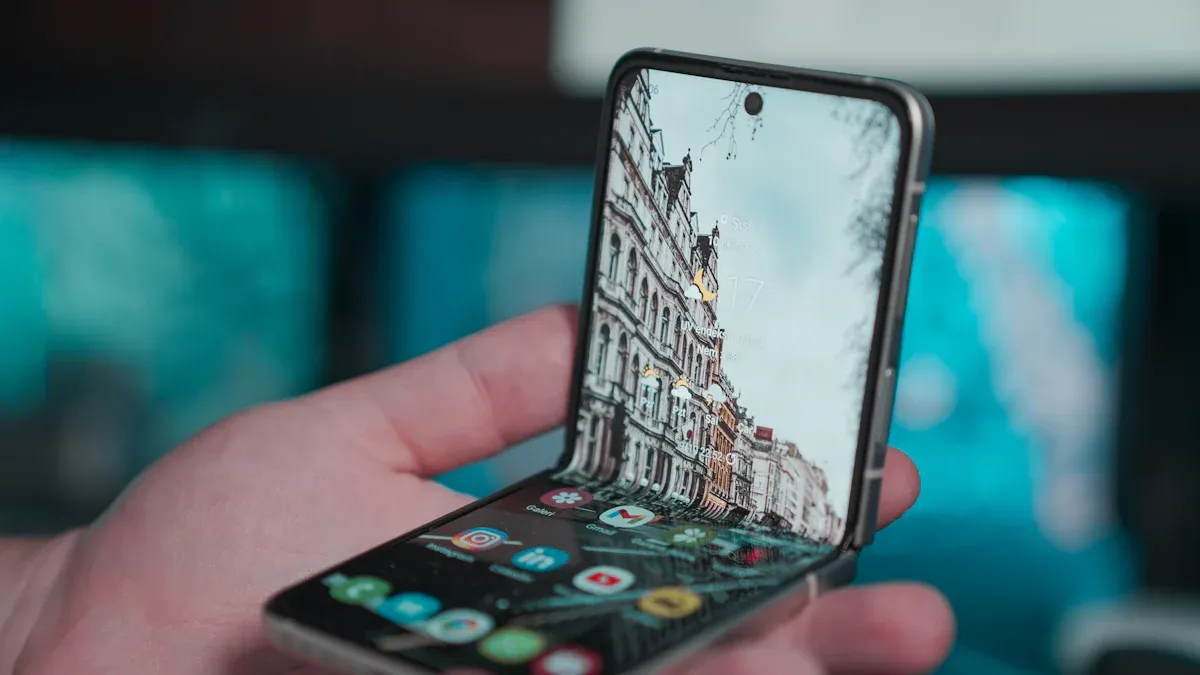
You might ask why are folding screen phones so expensive in 2025. These phones use special materials like ultra-thin glass and strong titanium. They have custom hinges and screens that bend many times and still stay bright. Phones like the Vertu Quantum Flip have fancy features, shiny finishes, and smart AI. All these things make it harder to build the phones and make them cost more.
-
Ultra-thin glass and titanium make phones tough and pricey.
-
Custom hinges need careful work to build right.
-
Flexible screens take costly steps to make.
-
Fancy materials and hand-made touches make phones worth more.
Key Takeaways
-
Folding screen phones use special materials like titanium and very thin glass. These materials make the phones stronger but also cost more money. Custom hinges and bendable screens need careful work to make. This careful work makes foldable phones cost more. Making new technology and features costs a lot of money. This adds to the price of foldable smartphones. Not many people buy foldable phones right now. Because of this, companies make fewer phones. Making fewer phones makes each one cost more. If technology gets better and more people want foldable phones, prices might go down later.
Why are folding screen phones so expensive
Advanced Materials and Engineering
When you pick up a foldable phone like the Vertu Quantum Flip, it feels fancy and strong. Makers use tough titanium alloy, soft calfskin, and light carbon to build these phones. Titanium alloy is very hard, so your phone can handle drops and daily bumps. Each Vertu Quantum Flip gets polished by hand for many hours. This makes every curve look smooth and perfect. This careful work makes the phone different from normal smartphones.
Foldable phones need pricier parts than regular phones. The Galaxy Z Fold uses special metals and custom pieces for its hinge. The hinge has hundreds of tiny metal parts. These must fit together with great care. You pay more because these materials and steps cost a lot.
Note: Many people want to know why folding screen phones cost so much. Warranties, how long they last, and how well they work also raise the price. Makers use better materials and designs so your foldable phone lasts longer.
Flexible Display Technology
Foldable phones use flexible OLED screens that bend many times. This is much better than screens in normal phones. You get very thin glass that folds but does not break. Hinges hold the screen and keep it bright and clear. These upgrades make foldable phones cost more.
-
Flexible display technology uses stronger materials and lasts longer.
-
Thin glass and strong hinges help buyers trust the phones.
-
Making foldable screens costs a lot, so prices stay high.
-
Many people think foldable phones cost too much, so they buy regular phones instead.
-
Flexible screens need more work and cost more to make than normal screens.
-
The folding part and special screen make foldable phones pricier.
If you look at the Galaxy Z Fold and a regular phone, you see the price difference. The Galaxy Z Fold 4 costs about $670 to make, but the iPhone 14 Pro Max costs around $474. The folding screen and hinge make foldable phones cost more.
Precision Manufacturing
Making foldable phones needs very careful work. The hinges in phones like the Galaxy Z Fold and Galaxy Z Flip have hundreds of metal pieces. Each piece must be made with an accuracy of 0.01mm. Makers use special ways like MIM, stamping, and CNC machines. These steps add to the price.
-
The hinge in the Galaxy Z Fold costs about $88, which is 13.8% of the total parts cost.
-
The market for foldable phone hinges is growing fast and could reach $1.82 billion by 2030.
-
Hinges make foldable phones cost much more than regular phones.
You also pay more because of worries about warranty, how long the phone lasts, and how well it works. Makers design foldable phones to last for years. They use strong materials and test the phones to make sure they work after many folds. Some people say their screens get a black line after two years. This shows why companies work hard to make better designs and use better materials.
|
Aspect |
Description |
|---|---|
|
Durability Concerns |
Flexible panels, hinges, and covers must last for years. |
|
Design Complexity |
More complex designs mean higher making and fixing costs. |
|
Material Efficiency |
Better materials and design make phones work well and cost more. |
Now you see why folding screen phones cost so much. New phone designs, fancy materials, and careful building all raise the price. When you buy a foldable phone, you pay for luxury, strength, and cool technology.
Foldable smartphones: R&D and Innovation
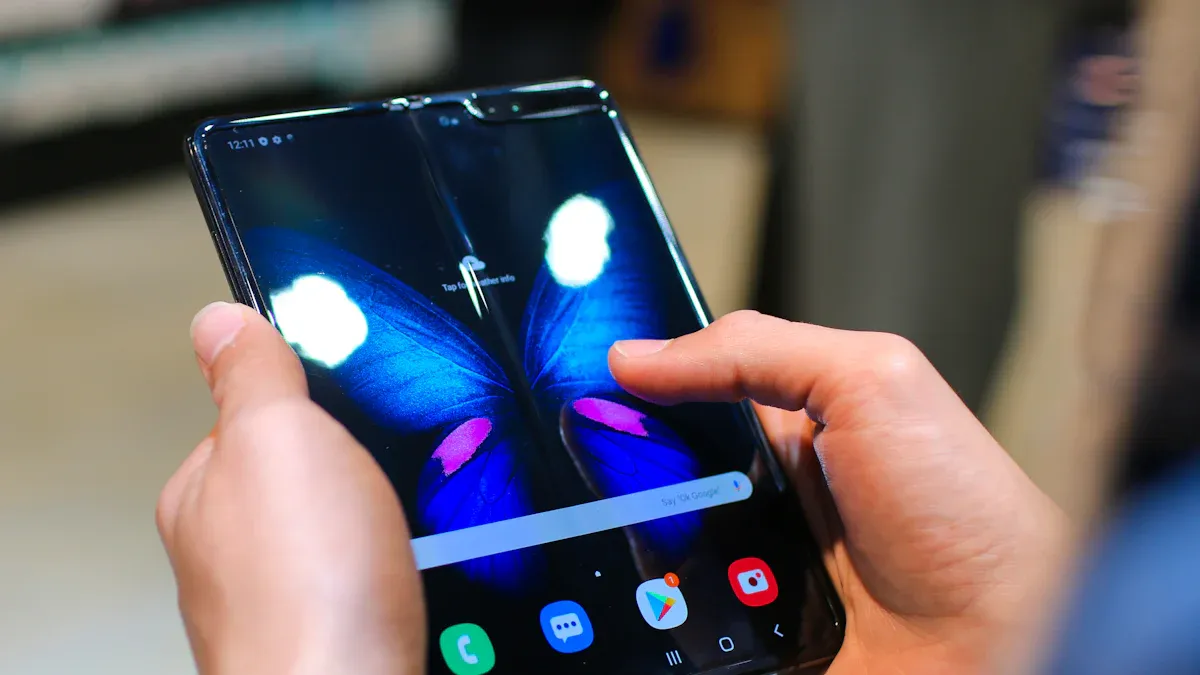
Ongoing Research Costs
You may wonder why companies spend so much on research. Every year, brands put millions into new folding technology and smart features. The Vertu Quantum Flip uses VPS AI to help you with tasks. This makes your phone feel more personal. This kind of technology is not cheap. You pay for the many hours engineers and designers work. They make your foldable smartphone smarter and more reliable.
Making a foldable smartphone is not just about hardware. The software must work well with the folding screen. Engineers need to make sure apps look good and run smoothly. This is true whether the phone is open or closed. This adds more cost. When you buy a foldable smartphone, you help pay for all the research. This research makes sure your device works well every time.
Note: Building strong foldable parts and good software costs more. Companies must design hinges and screens that last for years. They also need to make sure the software works fast with every fold.
Prototyping and Testing
Before you can buy a foldable smartphone, it goes through many tests. Apple started working on its foldable iPhone in 2025. The first prototype phase lasted about two months. Then, there were two more prototype phases. Each one took another two months. After these steps, the phone went to the Engineering Verification Test stage. This careful process can take over a year.
-
Each prototype phase helps fix problems before selling the phone.
-
Testing makes sure the screen and hinge work for thousands of folds.
-
The foldable iPhone is expected to cost $1,800 to $2,000. This high price shows the cost of new technology and fancy materials.
Foldable smartphones need more time and money to make than regular phones. Every new model needs careful planning, building, and testing. This is why foldable smartphones cost more in stores.
Foldable phones: Market and Production Factors
Limited Scale and Niche Demand
Foldable smartphones cost a lot because not many people buy them. The market for these phones is still small. Companies do not make a lot of foldable phones. When fewer phones are made, each one costs more. You pay extra because not enough people want them to lower the price.
-
Making foldable phones is hard, especially the hinge and flexible OLED screen. These parts are tricky and can cause delays. This keeps the cost for each phone high.
-
Foldable phones usually cost between $1,800 and $2,500. This is because not many are made and not many people want them.
-
It costs much more to make foldable phones than regular ones. For example, the Samsung Galaxy Z Fold4 starts at $1,799. This high price stops many people from buying.
If you look at the market, only a few brands sell foldable phones. Not as many people want them as regular phones. This makes the price stay high and the phones rare.
Supply Chain Challenges
It is harder for companies to make foldable phones. The supply chain for these phones is very complex. Makers need special screens and custom hinges. These parts cost more and take longer to make.
-
Foldable screens cost much more than normal ones. A foldable 7.3″ OLED screen costs $100. A regular screen costs $50.
-
Custom screens make the supply chain even harder. There is no big factory making lots of foldable screens.
-
Only about 30% of foldable screens pass quality checks. Normal OLED screens have a 60-70% pass rate.
-
Each brand wants its own design. Screen makers must make one model at a time. This makes it risky and expensive.
-
Screens must last through over 200,000 folds. This makes building them even harder.
Special machines and skilled workers are needed to make these phones. Makers use careful tools to build the hinges and screens. These steps slow down how fast phones are made and keep prices high. You pay more because companies cannot make lots of foldable phones quickly.
Comparing Foldable Phones to Regular Smartphones
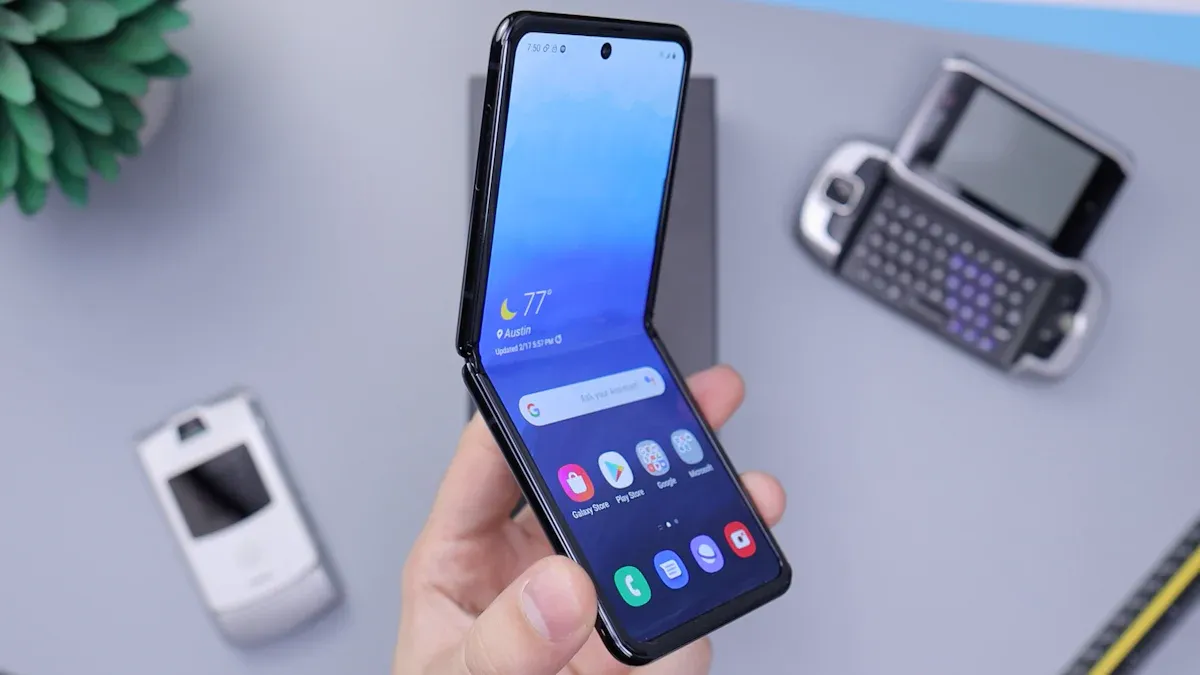
Price Gap
There is a big price difference between foldable phones and regular ones. Foldable phones like the Vertu Quantum Flip and the galaxy z fold cost a lot more. You pay a higher price for these foldable phones than for normal phones. The galaxy z fold and galaxy z flip usually cost from $1,800 to $2,500. Regular phones like the iPhone 14 Pro Max are often under $1,200. This higher price comes from special engineering, fancy materials, and cool features in foldable phones.
Many people think foldable phones are too expensive, but you get more than just a phone. You buy a special device with rare design and smart tech. The price also covers research, hand work, and custom parts.
Premium Features
Foldable phones have things you do not get in regular phones. You get a flexible OLED screen that opens to a big 6.9-inch display. The Vertu Quantum Flip uses strong titanium alloy and Quantum Agate mineral layers. It has a shiny finish and soft calfskin details. The galaxy z fold also has a folding screen, but it is not as fancy as the Quantum Flip.
Here is a table with some top features in foldable phones:
|
Feature |
Description |
|---|---|
|
Design & Materials |
Strong titanium body, Quantum Agate layers, shiny finish |
|
Performance & Display |
Snapdragon 8 Gen4, 16GB RAM, 1TB storage, 6.9” flexible OLED, 120Hz screen |
|
Privacy & Security |
Triple-layer security, custom Android, encrypted space, Secure Enclave chip |
|
AI & Smart Features |
VPS AI helper, 50MP dual-camera, satellite calls, AI translator |
|
Exclusive Services |
24/7 help, custom options, special gift box with pre-orders |
Foldable phones are special because of their luxury and new tech. You get better security, smart AI, and special services. Regular phones are made for being simple and working well. Foldable phones give you a fancy feel and rare materials.
Here is a quick comparison:
|
Feature |
Foldable Phones |
Traditional Smartphones |
|---|---|---|
|
Durability |
Hard build, normal materials |
|
|
Longevity |
Made to fold thousands of times |
Works well for a long time |
|
Mechanical Issues |
Fancy folding parts |
Simple, less likely to break |
You can see foldable phones give you more than just a screen that bends. You get a special device with luxury, smart tools, and a cool look. The high price matches what you get.
Value and Future Affordability
Is the Price Justified?
You might wonder if foldable phones are worth the high price. These phones give you more than just a cool look. They use strong materials and smart features. Makers use titanium alloy, calfskin, and carbon in phones like the Vertu Quantum Flip. Each phone gets polished by hand for many hours. This careful work makes them different from regular phones.
People have different thoughts about the cost. Some say the Galaxy Z Fold 7 is cool and has smart features. Others think the price makes these phones rare. Many people want more features when they pay a lot. The table below shows what people and experts think:
|
Critique |
Insight |
|---|---|
|
Price Increase |
The Galaxy Z Fold 7 costs more now, so people worry. |
|
Niche Market |
The high price makes foldable phones a special choice. |
|
Transformative Design |
The Galaxy Z Fold 7 brings new ideas to fancy phones. |
|
User Expectations |
You get a phone that stands out. If you like luxury, smart AI, and rare materials, the price might make sense.
Will Prices Drop?
You may ask if foldable phones will get cheaper soon. The market for foldable screens and phones is growing fast. In 2023, the foldable display market was worth $5.76 billion. Experts think it will grow by over 24% each year until 2032. The foldable smartphone market could reach $89.54 billion by 2032.
If more people want foldable phones, companies will make more. Making more phones can help lower the price. The table below shows how prices could drop:
|
Evidence |
Explanation |
|---|---|
|
Increased production scale and mid-tier options |
More phones made means lower costs and cheaper choices. |
|
Advancements in materials and manufacturing |
New tech makes building phones easier and cheaper. |
|
Innovations in battery and software |
Better performance can bring more buyers and lower prices. |
You will probably see cheaper foldable phones in a few years. As technology gets better and more people buy them, prices will go down. Soon, you may find a foldable phone that fits your budget and needs.
You notice folding screen phones cost more in 2025. This is because they use luxury materials and smart engineering. Market demand also makes prices higher. The Vertu Quantum Flip is a good example. It has hand-made details, titanium, and smart AI. These things make the phone cost more.
|
Factor |
Description |
|---|---|
|
Luxury Materials |
Titanium, sapphire, exotic leathers |
|
Engineering |
Precision hinges, flexible screens |
|
Market Trends |
Limited supply, high demand |
Lots of people worry about price and how long phones last. More brands are making foldable phones now. New materials are coming out too. You might see cheaper foldable phones soon. Better designs and new technology will help lower prices. This will make foldable phones easier for people to buy.
FAQ
Why do folding screen phones cost more than regular smartphones?
You pay more because folding screen phones use special materials like titanium and flexible glass. Makers spend extra time building strong hinges and testing each phone. These steps add to the price.
Are folding screen phones durable?
You get a phone built to last. Brands test hinges and screens for thousands of folds. Phones like the Vertu Quantum Flip can survive drops and daily use. You can trust the strength.
What makes the Vertu Quantum Flip special?
You see luxury in every detail. The Quantum Flip uses titanium alloy, calfskin, and carbon. Each phone gets hand-polished for hours. You also get smart AI features and a strong camera.
Tip: If you want a phone that stands out, choose one with rare materials and advanced technology.
Will folding screen phones become cheaper?
You may see prices drop as more people buy foldable phones. Makers will improve production and use new materials. This can help lower costs in the future.
Do folding screen phones have good warranties?
You get strong warranties with most foldable phones. Brands know you worry about durability. They offer support and repairs for hinges and screens.
|
Feature |
What You Get |
|---|---|
|
Warranty Length |
1-2 years |
|
Support |
Repairs, replacements |
|
Coverage |
Hinges, screens |



